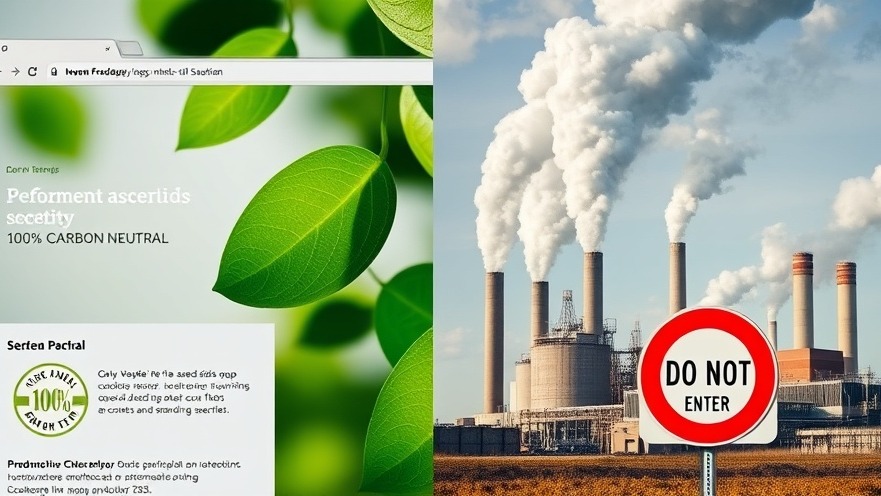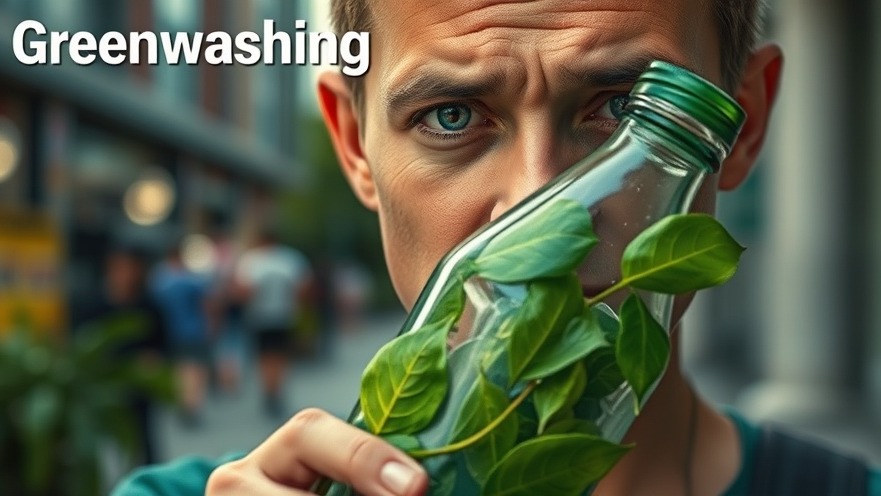
Introduction: The Green Illusion
It’s everywhere now—on shampoo bottles, shopping bags, bank websites, even fast-food wrappers. “Eco-friendly.” “Sustainable.” “Carbon neutral.”
These comforting phrases promise hope in a warming world. But what if many of them are just a mirage?
According to recent findings in Europe, over 40% of environmental claims made by companies could be misleading or outright false.
And as sustainability becomes a global selling point, so too does the temptation to fake it. This troubling practice—known as greenwashing—is becoming one of the biggest roadblocks in the fight against climate change.
As Maria, a senior official from the Malta Financial Services Authority, puts it:
“Greenwashing is when the financial product says one thing, but your money ends up doing the opposite—funding industries that harm the planet instead of helping it.”
In this article, we’re pulling back the curtain. You’ll hear from real experts in sustainable finance, law, and policy. We’ll explore how greenwashing works, who’s doing it, and—most importantly—how you can spot it.
Because protecting the planet starts with knowing who’s actually walking the talk… and who’s just using green ink.
The Roots of Sustainable Finance
Sustainable finance emerged as a response to rising climate concerns, with investors increasingly demanding more than just profits—they wanted purpose.
By integrating Environmental, Social, and Governance (ESG) factors into investment strategies, the goal was to drive money toward businesses that genuinely make a positive impact.
Joseph from the Malta Financial Services Authority explains how this began to evolve:
“We’ve seen a renaissance in regulation—driven by agreements like the Paris Climate Accord and tools like the EU Taxonomy—that aim to guide investors towards truly sustainable products.”
While the intent was noble, the execution has been inconsistent. Financial firms began rapidly marketing ESG products, but without consistent standards, many “sustainable” claims started slipping through regulatory cracks.
The rise of ESG funds, green loans, and sustainable insurance products was meant to offer both returns and responsibility. But the difference between truly green and just green-sounding became hard to spot.

Greenwashing Unveiled: Who’s Behind the Curtain
Greenwashing doesn’t happen by accident. According to experts at MFSA, it’s a three-part act involving the trigger (the one who starts the misleading claim), the spreader (often marketers or financial advisors), and the receiver (that’s us—the consumers and investors).
Take this common example: A fund markets itself as “green” because a small fraction is invested in renewable energy.
But most of the fund still supports industries with heavy emissions. “It’s like selling a chocolate bar as ‘healthy’ because it contains one almond,” said Joseph.
Real-world cases prove how widespread this can be:
JBS, one of the world’s largest meat producers, is being sued for promoting “net zero by 2040” while expanding its carbon-intensive operations.
Lululemon and Shein face allegations of misleading environmental marketing, prompting consumer watchdogs to dig deeper.
In 2023, the European Commission investigated 150 websites and found that 42% of green claims were exaggerated, false, or deceptive.
As OECD noted in its 2022 report:
“Greenwashing threatens the credibility of sustainable finance markets and undermines environmental progress by misleading investors and delaying real solutions.”
Greenwashing preys on good intentions. Companies use buzzwords, nature imagery, and vague language to mislead without outright lying. And without rigorous regulation, it works.
How to Spot the Fakes (and Support the Real Deal)
So what can you do as a consumer or investor? According to Maria, it starts with awareness:
“Even if a product claims to be green, dig deeper. Look for verified data and understand where your money is really going.”
4 Tips to Outsmart Greenwashing:
Look for third-party certifications, such as EU Ecolabel, FSC, or B Corp.
Avoid vague claims like “eco-conscious” or “green-friendly” with no specifics.
Check the ESG breakdown: Is the company transparent about their environmental, social, and governance practices?
Follow the money: Ask your advisor exactly where your funds are invested.
“We need consumers to become detectives again,” says Veronica Scotti, Chairperson of Public Sector Solutions at Swiss Re. “Demand evidence. If a company says it's cutting emissions, ask how.”
A truly sustainable product will show—not just tell—what it’s doing for the planet. And companies who care about the earth won’t be afraid to share proof.
3 Red Flags to Watch Out For:
Claims like "eco-friendly" with no third-party verification.
Images of nature with no actual proof of green business practices.
Promises like tree-planting per sale that aren’t tracked or publicly reported.

Moving Toward Real Accountability
Organizations like the OECD and ESMA are pushing for stricter rules around ESG disclosures. Their reports call out the risks of greenwashing and urge regulators to enforce clearer standards and consequences.
There’s also a shift happening in consumer power. With lawsuits against major brands making headlines, the pressure is mounting for companies to walk the talk.
From carbon-neutral claims to tree-planting promises, greenwashing is being exposed as more than just misleading—it’s dangerous. It distorts the market and derails real climate progress.
But there’s hope. As tools like AI and blockchain help verify sustainability claims, and as consumers get savvier, the era of greenwashing may finally meet its match.
Conclusion: Awareness is Our Greatest Ally
The road to a more sustainable world depends not only on innovation and regulation—but on informed choices. By learning how to identify greenwashing, we can steer our money, our trust, and our influence toward companies that truly deserve it.
As Joseph puts it:
“If we all ask more questions and demand more honesty, we’ll create a financial system that’s not just profitable—but purposeful.”
Whether you're an investor, consumer, or business leader, this is your moment to step into the green movement with clarity—not confusion. Let’s make sure “sustainable” actually means something again.
 Add Row
Add Row  Add
Add 





 Add Row
Add Row  Add
Add
Write A Comment